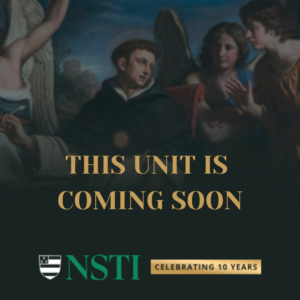Isaiah 2
/in /by Taylor Marshall- The Apocalyptic Genre in Isaiah
Apocalyptic literature in the Book of Isaiah often revolves around themes of divine judgment and the eventual vindication of God’s righteousness. In Isaiah 24-27, a section sometimes referred to as the “Isaian Apocalypse,” there is a vision of a cosmic judgment encompassing the entire earth. The Church Fathers, such as Saint Jerome, perceived in these passages a prefiguration of Christ’s final judgment, which would separate the righteous from the wicked.
Isaiah 24:21-23 declares: “And it shall come to pass, that in that day the Lord shall visit upon the host of heaven on high, and upon the kings of the earth, on the earth. And they shall be gathered together as in the gathering of one bundle into the pit, and they shall be shut up there in prison: and after many days they shall be visited. And the moon shall blush, and the sun shall be ashamed, when the Lord of hosts shall reign in mount Sion, and in Jerusalem, and shall be glorified in the sight of his ancients.”
- Restoration and Transformation of Creation
Apocalyptic elements in Isaiah also include vivid depictions of the renewal and transformation of the created order, often referred to as the “new heavens and new earth.” These passages resonate with Catholic eschatological teachings about the restoration of creation and the ultimate fulfillment of God’s plan.
Isaiah 65:17-19 “For behold I create new heavens, and a new earth: and the former things shall not be in remembrance, and they shall not come upon the heart. But you shall be glad and rejoice for ever in these things, which I create: for behold I create Jerusalem a rejoicing, and the people thereof joy. And I will rejoice in Jerusalem, and joy in my people, and the voice of weeping shall no more be heard in her, nor the voice of crying.”
- Messianic Hope and Redemption
The apocalyptic passages in Isaiah are intertwined with messianic hope and the promise of redemption. Catholic scholars, such as Saint Augustine, have illuminated the connection between these passages and the person of Jesus Christ, seeing in them a foretelling of His role as the Messiah.
Isaiah 35:4-6 “Say to the fainthearted: Take courage, and fear not: behold your God will bring the revenge of recompense: God himself will come and will save you. Then shall the eyes of the blind be opened, and the ears of the deaf shall be unstopped. Then shall the lame man leap as a hart, and the tongue of the dumb shall be free: for waters are broken out in the desert, and streams in the wilderness.”
- Suffering Servant makes Atonement
Apocalyptic themes in Isaiah are also intricately connected to the concept of the “Suffering Servant.” Catholic theologians, like Saint Thomas Aquinas, have interpreted these passages as foreshadowing the redemptive suffering of Christ, particularly in Isaiah 53.
Isaiah 53:4-5 “Surely he hath borne our infirmities and carried our sorrows: and we have thought him as it were a leper, and as one struck by God and afflicted. But he was wounded for our iniquities, he was bruised for our sins: the chastisement of our peace was upon him, and by his bruises we are healed.”
- Hope after Wrath
Apocalyptic passages in Isaiah offer hope amidst times of desolation and upheaval. They remind believers of God’s sovereignty over history and His ultimate victory over evil. This theme resonates with the Catholic understanding of God’s providence and the triumph of His plan.
Isaiah 61:1-3 “The spirit of the Lord is upon me, because the Lord hath anointed me: he hath sent me to preach to the meek, to heal the contrite of heart, and to preach a release to the captives, and deliverance to them that are shut up. To proclaim the acceptable year of the Lord, and the day of vengeance of our God: to comfort all that mourn: To appoint to the mourners of Zion, and to give them a crown for ashes, the oil of joy for mourning, a garment of praise for the spirit of grief: and they shall be called in it the mighty ones of justice, the planting of the Lord to glorify him.”
